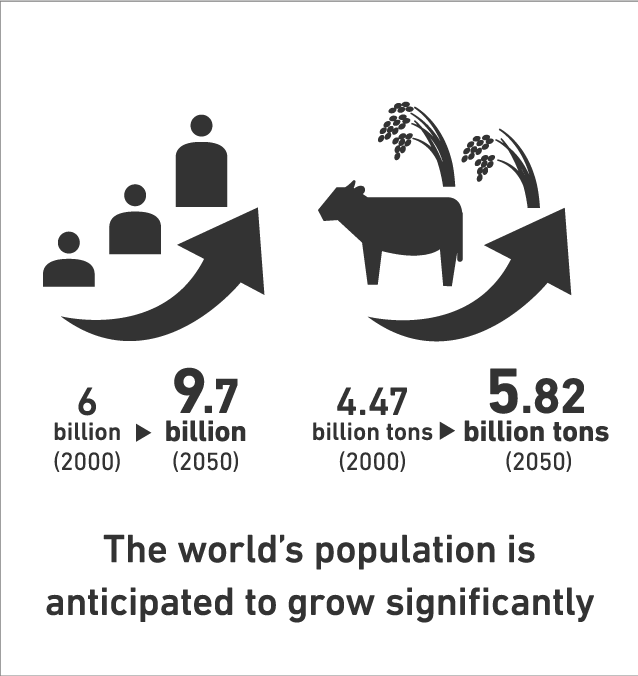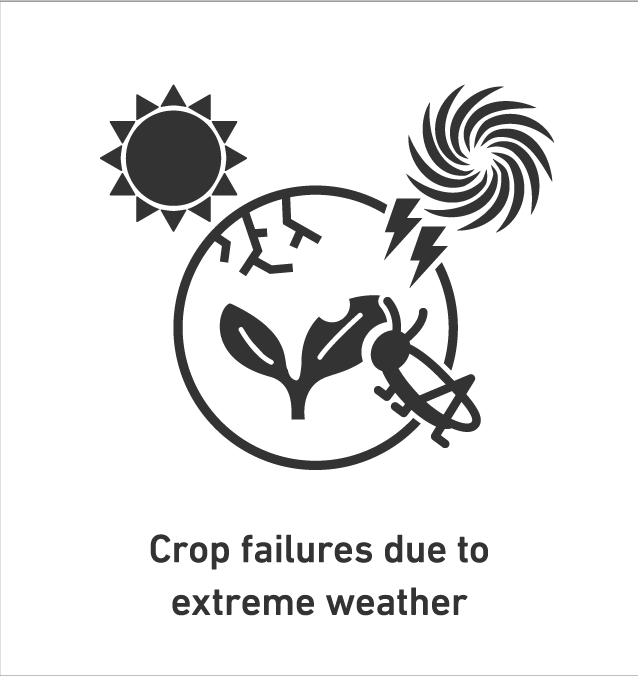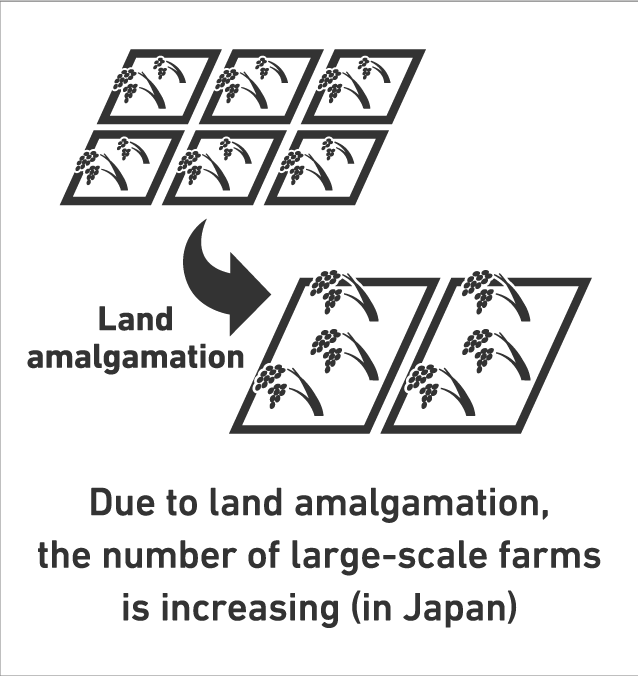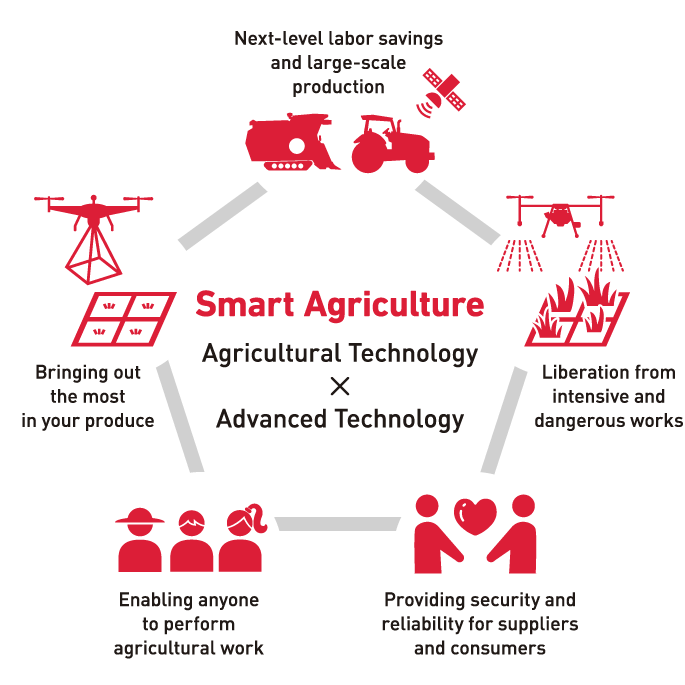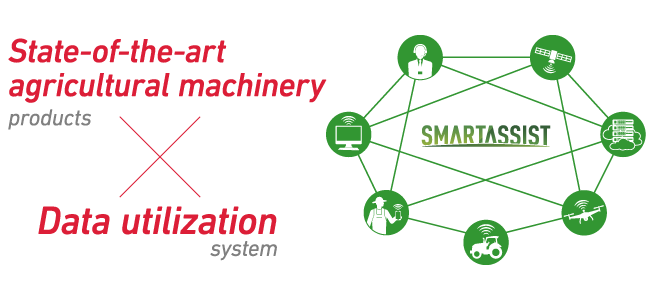State-of-the-art agricultural machinery (initiatives in Japan)
Shaping the future of agriculture with YANMAR technology
YANMAR began development of a robot tractor in 2011, and in 2016 received the Minister of Agriculture, Forestry and Fisheries Award at the 7th Robot Awards. Blazing a trail ahead of our competitors, YANMAR is pursuing the robotization of agricultural machinery. In terms of rice transplanting, we are realizing labor savings by combining our auto rice transplanters with YANMAR’s high-density seedling (Mitsunae) technology. With SMARTASSIST and remote sensing, smart combine harvesters equipped with yield monitoring functionality are helping farmers to improve work accuracy and plan more efficiently for the following growing season.
Our aim is for everybody, regardless of experience, to be able to do agricultural work accurately and efficiently. Moving forward, YANMAR will continue to expand initiatives centered on smart agriculture.

Drone (remote sensing)
Enables farmers to monitor the health of their crops, providing information which is useful for making adjustments to spraying/fertilizer ratios.

Drone (pest control)
Even in narrow fields or mountainous areas, pest control is now possible from the air.

Unmanned Helicopter (pest control)
Airborne agriculture has evolved further, with this helicopter allowing large-volume spraying.
Data utilization
Farm support system utilizing data
By centralized large-scale data management/links to agricultural machinery via SMARTASSIST, as well as visualization of crop growth with remote sensing, precise production management and operational efficiencies can be realized.
Using such technology to enable the transfer of know-how to the next generation of farmers, while achieving labor savings and higher efficiency and precision, YANMAR will continue to support farmers in making their business more profitable.
YANMAR’s vision for the future of agriculture
In future, data analysis will become increasingly important for agricultural management. Centered around visualizing agriculture by accumulating and analyzing information via SMARTASSIST, YANMAR Smart Agriculture works to support farmers by linking together a wide range of data sources.
For example, in addition to their conventional functions, agricultural machinery will also act as in-field sensors, with work data and sensing data managed centrally by SMARTASSIST. Once the data is received, SMARTASSIST creates an optimized production plan, and sets tasks and a working area for the machinery based on the plan.
Comprehensive collection and analysis of various data ensures stable quality and yields, and contributes to labor-savings.
This ideal future is just around the corner.
With a view to the next generation, YANMAR will continue to take on the challenge of achieving sustainable agricultural management.
Rice cultivation solutions utilizing remote sensing







